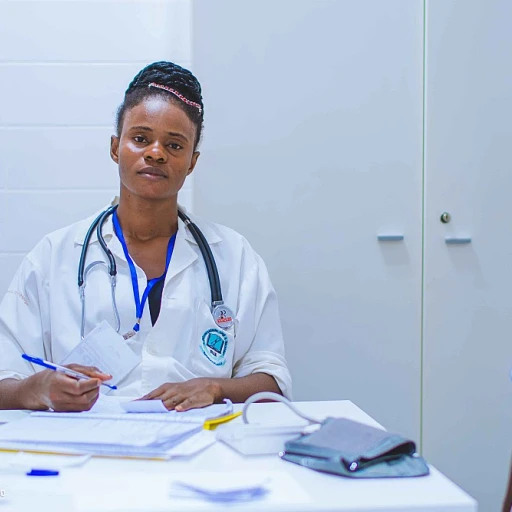The Essence of the Norming Stage
The core essence of stability and collaboration
In the intricate tapestry of team development, the norming stage represents a crucial phase that bridges initial enthusiasm and ultimate productivity. If you're unfamiliar with this stage, it's part of Bruce Tuckman's renowned group development model, which also includes forming, storming, and performing stages.
In essence, the norming stage is when team members begin to ease into their roles more comfortably. The turmoil from the previous stage, often marked by conflicts and differences, gives way to a more harmonious environment. Teams at this stage start to demonstrate greater cohesion and solidarity. As harmony builds, team members often experience a significant improvement in their project management capabilities. This is because they have begun to establish clear norms and work cooperatively towards shared goals.
Building trust and defining roles
The norming stage is characterized by a sense of unity. Individuals transition from being 'just team members' to active contributors, who understand the significance of their roles within the group framework. This transition is not just about settling into a routine, but about embracing mutual respect and shared responsibilities.
Feedback becomes a constructive tool, rather than a source of contention. The focus shifts towards achieving collective goals and leveraging combined strengths. At this juncture, effective
team building activities can significantly bolster engagement and trust among team members. Successful teams often learn to utilize these activities to further solidify their bond and collaboration.
Team leaders play a pivotal role during this time by facilitating interactions and helping team members navigate through the brief moments of lingering conflict. By employing empathy and clear communication, leaders can guide the team toward the performing stage, where productivity and innovative problem-solving take the forefront.
Understanding the essence of the norming stage in team dynamics not only fosters a stable work environment but also propels team development to new horizons.
Characteristics of the Norming Stage
Key Characteristics of Successful Team Cohesion
Understanding the characteristics of the norming stage is crucial for appreciating how teams come together after the initial forming and storming stages. During the norming stage, a distinct development occurs within the team, creating a more cohesive and harmonious working environment. Here, we explore these key characteristics that define this vital phase of team development.
Firstly, as team members navigate through the norming phase, they begin to develop a deeper understanding and empathy towards one another. This empathetic connection fosters an environment where open communication and constructive feedback become more natural and integral to the group culture. A sense of trust and safety encourages individuals to express their ideas and concerns without the fear of judgment, leading to enhanced group collaboration.
Another significant characteristic of the norming stage is the clear definition and understanding of roles. Each team member starts to recognize the importance of their contribution to the project and how their responsibilities align with the team’s overall goals. This clarity not only boosts individual motivation but also enhances the collective efficacy of the team.
Moreover, strong leadership plays a pivotal role during this stage. A positive and engaged team leader helps guide the team towards unity, promoting a shared vision. Such leadership encourages participation and ensures that team goals are met efficiently. It results in informed decision-making and creates an atmosphere of mutual respect.
Teams in the norming stage also exhibit improved time management and a structured approach to problem-solving. They understand the importance of collaborating towards a shared objective and utilizing the skills of each member to achieve optimal outcomes within set timeframes. This structured approach is vital for transitioning smoothly into the performing stage, where the team will function at its peak capacity.
These characteristics highlight the significant transformation that teams undergo in the norming stage, setting the foundation for subsequent stages of group development. For further insights on boosting team spirit and cohesion during these critical moments, consider exploring
inspiring words to boost team spirit. By embracing these characteristics, teams can successfully navigate the norming phase, paving the way for enhanced performance and success.
Challenges in the Norming Stage
Overcoming Obstacles to Achieve Synchronicity
Navigating the norming stage of team development can be challenging, given that it is a critical point where teams begin to harmonize. However, certain hurdles could impede progress. Here's a look at some of the common challenges that teams face during this phase:
- Role Clarity: While team members are getting accustomed to their roles, lingering ambiguity may still remain. This lack of clarity can hinder productivity, causing confusion and misalignment with project goals.
- Balancing Independence and Cohesion: Teams strive to strike a balance between encouraging individual creativity and fostering collective collaboration. Members may struggle to align personal work styles with the broader team dynamics.
- Communication: Despite having moved past the initial storming, communication barriers could persist, especially if open and constructive feedback systems have not yet been fully established. Smooth communication is vital for addressing misunderstandings swiftly.
- Maintaining Momentum: Teams may face difficulties in maintaining the initial energy and enthusiasm. Ensuring a continued focus on goals and sustaining morale is essential to progress towards the performing stage.
- Group Decision-Making: Consensus-building can be challenging as team members have different perspectives. Navigating through differing opinions while maintaining respect and cohesion can be complex.
Each of these challenges requires a strategic approach, often facilitated by effective project management and leadership. Recognizing and addressing these challenges head-on can help teams transition smoothly from the norming to the performing stage. Enhanced
employee engagement through convergence training can also play a pivotal role in addressing these issues, equipping team members with the necessary skills to collaborate efficiently and achieve optimal results.
Encouraging regular check-ins and facilitating open discussions can help team leaders identify any underlying issues early on. By proactively addressing these challenges, teams will be better equipped to unite and work cohesively, paving the way for a more effective and engaged work environment.
Role of Leadership in the Norming Stage
Guiding Teams Through the Norming Phase
During the norming stage of group development, leadership plays a pivotal role in transitioning the group from the previous stages of forming and storming to being more cohesive. The team leader must foster an environment where collaboration thrives and where team members can finally achieve their potential.
One of the primary responsibilities of a team leader at this stage is establishing clear and visible roles within the team. As teams begin to move from uncertainty to more structured interactions, defining what each team member brings to the table is crucial. This clarity helps build trust and understanding among members, ensuring the team is aligned and working toward shared goals.
Effective leadership during this stage also involves initiating regular feedback sessions. As team members settle into their roles and the group dynamics stabilize, providing constructive feedback can bolster confidence and enhance performance. Such sessions not only help in acknowledging individuals’ contributions but also address any lingering issues from the storming phase.
Furthermore, a team leader should continuously reinforce the collective identity of the group. At the norming stage, emphasizing the ‘we’ over the ‘I’ helps maintain harmony and encourages collaboration. Simple acts like celebrating small wins or organizing team-building activities can go a long way in strengthening team cohesion.
Recognizing the importance of motivation during this stage is essential as well. When leaders actively support and encourage their teams, the shift from norming to the performing stage becomes seamless. Providing resources, offering professional development opportunities, and acknowledging individual achievements help team members remain engaged and motivated.
Lastly, employing effective project management techniques will assist the team in remaining focused on the established goals. By implementing clear timelines and objectives, leaders ensure that their teams are not only productive but also prepared for the performing stage where their efforts will culminate in high-level output.
In summary, the presence of supportive and decisive leadership during the norming stage fosters an environment where teams can thrive and progress towards becoming fully performing units.
Measuring Success in the Norming Stage
Evaluating Effectiveness and Achievements
Measuring success during the norming stage of team development is crucial for ensuring that the team is on the right path toward achieving its goals. Several indicators can be utilized to assess whether the team has truly moved into this harmonious phase of work.
- Consistency in Roles: One way to measure success is by observing the consistency with which team members fulfill their roles. In this stage, each member understands their responsibilities and consistently acts within their role. Any deviations might suggest unresolved issues from previous stages, such as storming.
- Communication and Feedback: Effective communication is a hallmark of the norming stage. Teams should engage in open, honest dialogue without fear of conflict. Regular feedback sessions where team members can express thoughts and ideas constructively ensure this. If feedback is being sought and acted upon regularly, it's a strong indication of a successful norming process.
- Team Cohesion: Evaluate the sense of camaraderie and unity within the group. The norming stage is characterized by a high level of trust and genuine collaboration. Team members should demonstrate commitment to the project and collective goals, working together harmoniously towards the shared objectives.
- Goal Achievement: Ultimately, the effectiveness of the norming stage can be measured by the ability of the team to meet project milestones on time and with quality outputs. The alignment of personal goals with team goals is pivotal, as it propels the group from norming into the performing stage.
- Reduced Conflict: Another indicator of a successful transition through the norming stage is the reduction in conflict compared to the storming stage. Teams that can resolve disagreements quickly and efficiently exhibit the maturity and development expected at this point.
It's important for a team leader or project manager to continuously monitor these indicators to ensure sustained growth and development. By understanding the unique attributes of this phase, steps can be taken to nurture and sustain team progress, propelling them toward the performing stage of group development.
Case Studies: Successful Norming Stage Strategies
Illustrative Examples of Effective Practices in the Norming Stage
The transition from the forming stage to the norming stage in team development can mark the beginning of a harmonious phase, where team members start working together more cohesively. This stage is pivotal as it lays the groundwork for future success. Let's look into some case studies that highlight effective strategies implemented during the norming stage.
One organization successfully navigated the norming stage by establishing clear roles and responsibilities. Team leaders worked closely with members to define their roles, reducing ambiguity and enhancing productivity. This clarity allowed individuals to focus on their strengths, contributing to the overall progress of the project.
In another case, feedback mechanisms were put in place to ensure continuous improvement and development. Teams regularly engaged in group feedback sessions where members could voice their opinions and provide suggestions. These sessions not only aligned with the goals of the norming stage but also fostered a culture of communication and collaboration.
Furthermore, the introduction of structured team-building activities proved beneficial for another group’s development. These activities encouraged interaction, fostering trust among team members and enhancing group dynamics. Such initiatives propelled the team smoothly into the performing stage where productivity soared.
Effective leadership during the norming stage is also crucial. Leaders who prioritized emotional intelligence, offering support and understanding personal needs, created a conducive environment for team growth. This approach minimized conflicts, an area typically challenging in the storming phase, and guided the team towards performance optimization.
These examples underscore that successful navigation of the norming stage involves a blend of strategic planning, clear communication, and strong leadership, which are essential for nurturing a team into a well-oiled unit ready to conquer the performing stage hurdles.












